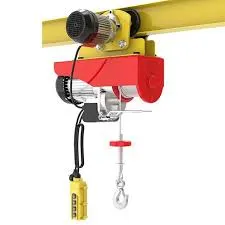


Understanding Chain Block and Lever Block Mechanisms of Mechanical Advantage
In the world of engineering and mechanical systems, tools that provide mechanical advantage play a crucial role in simplifying tasks that involve lifting or moving heavy objects. Two widely used tools in this domain are the chain block and the lever block. Though they serve a similar purpose, they employ different mechanisms to achieve their lifting capabilities. This article will delve into the working principles, advantages, and applications of these two vital pieces of equipment.
Chain Block
The chain block, also known as a chain hoist, utilizes a chain to lift heavy loads. This device comprises a pulley system that is fed with a chain, which, when pulled, lifts the load. The main components include the chain, the lifting mechanism (usually a ratchet and pawl system), and the hook that secures the load.
One of the key benefits of a chain block is its simplicity and efficiency. It can lift substantial weights with relatively little effort due to the mechanical advantage gained through the pulleys. By multiplying the force exerted through the chain, workers can hoist items that would otherwise be impossible to lift manually. The design of the chain block enables users to quickly adapt to varying load sizes, making it a versatile tool for different industries, including construction, shipping, and manufacturing.
Moreover, chain blocks are built to withstand heavy-duty operations. Most models are made of robust materials that provide durability and a long service life. Safety features, such as load limiters and emergency stop mechanisms, further enhance their usability. In many settings, chain blocks are mounted from overhead beams or gantries, allowing for seamless vertical lifting without taking up valuable floor space.
Lever Block
On the other hand, the lever block, often referred to as a lever hoist or come-along, employs a lever mechanism to exert force and lift loads. This tool consists of a handle (the lever), a ratchet mechanism, and a hook to secure the load. The principle behind a lever block is based on the laws of leverage. By pulling down on the lever handle, the user can create a significant upward force that lifts the load attached to the hook.

One of the primary advantages of lever blocks is their portability. Unlike chain blocks, which often require an overhead mounting point, lever blocks can be used in various locations, making them suitable for both indoor and outdoor applications. Their compact design allows for easy transport and use in tight spaces.
Lever blocks are particularly effective for lifting objects that need precise positioning. The ability to control the lifting process by adjusting the lever's angle ensures that operators can maneuver loads carefully and efficiently. Similar to chain blocks, lever blocks are also made from high-strength materials, designed to withstand heavy loads while ensuring user safety.
Applications and Industries
Both chain blocks and lever blocks are vital in countless industries. Chain blocks are commonly found in construction sites, warehouses, and factories where heavy machinery and materials need to be lifted and moved. The applicability of chain blocks extends to automotive repair shops, where they facilitate engine hoisting and other heavy tasks.
Lever blocks, with their flexibility and portability, are often used in maintenance work, rescue operations, and any situation where lifting a load without permanent fixtures is necessary. They are favored in situations where precision and control over the lifting process are paramount, such as in rigging or during the assembly of machinery.
Conclusion
In summary, both chain blocks and lever blocks are indispensable tools that provide mechanical advantage in lifting and moving heavy loads. While chain blocks are ideal for heavy-duty applications requiring overhead lifting, lever blocks offer versatility and portability for various lifting tasks. Understanding their mechanisms and applications is crucial for ensuring safety and efficiency in any task involving heavy lifting. By choosing the right tool for the job, workers can achieve their goals more effectively while reducing the risks associated with manual handling.



